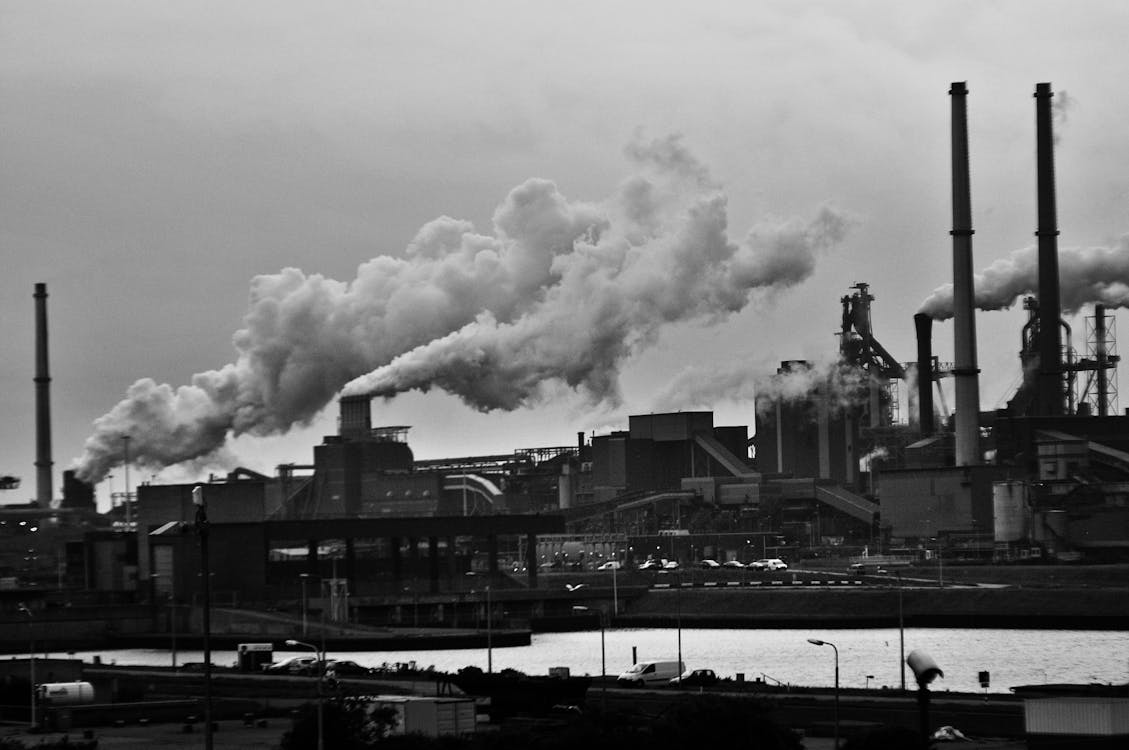Environmental pollution is one of the most significant challenges of our time, and it poses a threat to human health, ecosystems, and the planet’s sustainability.
Environmental pollution can be defined as the presence of harmful substances or pollutants in the natural environment, which can cause adverse effects on human health, animals, and plant life. Environmental pollution can come from various sources, including human activities, natural disasters, and other factors.
In this blog, we will discuss the primary sources of environmental pollution and their impacts on the environment.

- Industrial Pollution
One of the significant sources of environmental pollution is industrial pollution.
Industries produce a wide range of toxic chemicals, waste, and pollutants that can contaminate the air, water, and soil. Pollution can be caused by many factors, including the improper disposal of hazardous waste, oil spills, leaks, and the emission of greenhouse gases, such as carbon dioxide, methane, and nitrous oxide.
- Chemical manufacturing plants and factories produce a variety of toxic chemicals and waste that can pollute the air, water, and soil.
- Power plants that burn fossil fuels to produce electricity can emit pollutants, such as sulfur dioxide, nitrogen oxides, and particulate matter, into the air.
- Mining and extraction operations can release harmful chemicals and metals, such as mercury and lead, into the environment.
- Improper disposal of hazardous waste, such as batteries and electronic waste, can lead to soil and water contamination.
The industrial sector is one of the most significant contributors to air pollution, and the emission of toxic gases and particulate matter can have severe health impacts on people living in the surrounding areas.
Pollution can cause respiratory diseases, cancer, and other illnesses.
- Agricultural Pollution
Agricultural pollution is another significant source of environmental pollution.
The use of pesticides, herbicides, and fertilizers in agriculture can contaminate the soil, water, and air. The runoff from agricultural fields can carry pollutants, such as nitrogen and phosphorus, into water bodies, leading to algal blooms, fish kills, and other environmental issues.
- The use of pesticides and herbicides in agriculture can contaminate the soil, water, and air.
- Livestock rearing can produce significant amounts of methane, a potent greenhouse gas, which contributes to climate change.
- Nitrogen and phosphorus runoff from agricultural fields can cause algal blooms and fish kills in water bodies.
- Soil erosion and degradation can lead to loss of biodiversity and reduced crop yields.
In addition, the emission of greenhouse gases from agricultural activities, such as livestock rearing and rice cultivation, can contribute to global warming and climate change. The use of chemical fertilizers and pesticides can also lead to soil degradation and loss of biodiversity.

- Transportation Pollution
Transportation is another significant source of environmental pollution.
The burning of fossil fuels in cars, trucks, buses, and other modes of transportation can emit harmful pollutants into the air, such as carbon monoxide, nitrogen oxides, and particulate matter. These pollutants can cause respiratory diseases, heart disease, and other health issues.
- Vehicles that burn fossil fuels can emit pollutants, such as carbon monoxide, nitrogen oxides, and particulate matter, into the air.
- The transportation of goods and people can also contribute to air pollution and greenhouse gas emissions.
- Traffic congestion can exacerbate pollution in urban areas, leading to health issues such as respiratory problems and heart disease.
- The production and disposal of vehicles also contribute to environmental pollution.
In addition, the emission of greenhouse gases from transportation contributes to climate change and global warming. The transportation sector is responsible for approximately 25% of global greenhouse gas emissions, making it one of the most significant contributors to climate change.
- Waste Pollution
Waste pollution is a significant environmental issue, and it includes the improper disposal of waste, such as plastic, electronic waste, and hazardous waste. The accumulation of waste in landfills can lead to the release of methane and other harmful gases, which contribute to climate change and global warming.
- Improper disposal of plastic waste can lead to pollution of the oceans, affecting marine life and ecosystems.
- Landfills can release methane, a potent greenhouse gas, into the atmosphere, contributing to climate change.
- Electronic waste, such as old computers and phones, can contain hazardous materials that can harm human health and the environment if not disposed of properly.
- Food waste in landfills can contribute to the emission of methane and other harmful gases.
In addition, the improper disposal of hazardous waste, such as chemicals and electronic waste, can lead to soil and water contamination, posing a threat to human health and ecosystems.

- Energy Pollution
Energy production is another significant source of environmental pollution.
The burning of fossil fuels, such as coal, oil, and natural gas, for energy production, can emit harmful pollutants into the air, such as sulfur dioxide, nitrogen oxides, and particulate matter.
- The burning of fossil fuels to produce energy can release pollutants, such as sulfur dioxide and nitrogen oxides, into the air.
- The extraction and transportation of fossil fuels can also lead to environmental pollution and disruption of ecosystems.
- Nuclear power plants can produce radioactive waste that must be carefully managed and stored to prevent environmental contamination.
- Renewable energy sources, such as wind and solar power, are becoming more widespread, but their production and disposal can also contribute to environmental pollution.
The use of renewable energy sources, such as solar and wind power, can help reduce the environmental impact of energy production.
Conclusion
Environmental pollution is a significant challenge of our time, and it poses a threat to human health, ecosystems, and the planet’s sustainability. The primary sources of environmental pollution include industrial pollution, agricultural pollution, transportation pollution, waste pollution, and energy pollution. To address the issue of environmental pollution, we need to take collective action and adopt sustainable practices that reduce our impact on the environment. This includes reducing our use